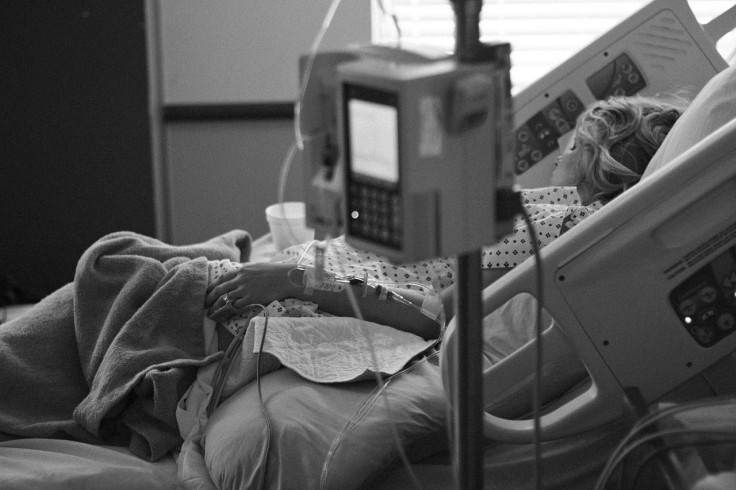Heart Disease Affects More Young Women Than Men, So Why Are Women Less Informed?

More than 15,000 deaths among young women living in the United States can be attributed to heart disease each year, yet both young women and their physicians underestimate cardiovascular risk, finds a new study published in the Journal of The American College of Cardiology.
Researchers believe this is partly because of gender differences surrounding the most common risk factors: diabetes, high cholesterol, hypertension, obesity, and smoking status. For example, general obesity is considered to be an "independent risk factor and does not improve heart disease risk prediction in women or men." But if obesity isn't a risk factor or treatment target, researchers wondered, why were the female patients with acute myocardial infarction (AMI) — the technical term for heart attack — more obese than men? Drs. C. Noel Bairey Merz, Holly S. Andersen, and Chrisandra L. Shufelt look to a "cultural gender bias."
"Prior study demonstrates that women are relatively more 'objectified' in society ... expressing more concern about their bodyweight than men," they wrote in an accompanying editorial. "Prior work confirms that women's [heart disease] risk is underestimated by health care providers. This suggests that health care providers are assessing risk in women according to objective appearance rather than valid risk factors."
To better understand this bias, researchers recruited 3,501 patients (aged 18 to 55) who had been hospitalized with AMI in either the United States or Spain to participate in the VIRGO study: Variation in Recovery: Role of Gender on Outcomes of Young AMI Patients. Researchers gathered patients' baseline data from medical charts, in-person interviews, and prior medical history. They also measured for sociodemographic factors, including age, sex, self-identified race, and education, as well as "access-to-care factors," such as lack of insurance and having a primary care physician.
During the baseline interview, patients were asking about their personal perceptions of risk and discussion of heart disease risk and modifiable risk factors with their health care providers prior to AMI. For example, one questions was, "Prior to your recent hospital stay, did you consider yourself at risk for heart disease or a heart problem?" and "Did a doctor ever talk to you about heart disease and … things that you could do to take care of your heart?"
With this data, researchers compared the prevalence of the five risk factors, plus patient reports of clinical counseling on heart disease between women and men. The results showed that nearly all women and men had at least one of five potential risk factors — nearly two-thirds of patients had three or more risk factors, with the exception of smoking. And compared to Spain, these factors were more prevalent in U.S. patients.
More importantly, researchers found that women were 11 percent "less likely than men to report being told they were at risk for heart disease" and 16 percent "less likely than men to report having a health care provider discuss heart disease and ways to modify risk."
"This inequity largely persisted across cardiac risk factors was more pronounced among patients without a history of [coronary artery disease] and among those who had not visit a heart specialist in the year before the index AMI, and was observed for patients in both the United States and Spain," researchers said.
This may seem odd given the increase in awareness campaigns surrounding heart disease in women, but to researchers, awareness remains "suboptimal." In the American Heart Association's 2012 National Women Survey, only 56 percent of women respondents cited heart disease as a leading cause of death in women. And fewer than that (48 percent) considered themselves "very well or well informed about heart disease in women."
"Young women cannot afford to continually be less informed than men about their risk for heart disease," lead study author Dr. Erica Leifheit-Limson, an associate research scientist in chronic disease epidemiology at the Yale School of Public Health in New Haven, said in a press release. "We need to improve how we give information about heart disease to younger patients. It should be a priority for health care providers to address basic risk factors and prevention with patients at risk."
That said, the present study has several limitations, including the fact researchers relied on medical charts to obtain risk factor information. Patient interviews, too, are typically thought to be "subject to recall bias and patients' awareness of risk factor status."
Researchers concluded: "Communication and outreach are sorely needed to counter stereotypes about heart disease with facts and validated risk assessment so women and physicians can know and practice the truth."
Source: Leifheit-Limson E. Sex Differences in Cardiac Risk Factors, Perceived Risk, and Health Care Provider Discussion of Risk and Risk Modification Among Young Patients With Acute Myocardial Infarction. Journal of The American College of Cardiology. 2015.
Published by Medicaldaily.com



























